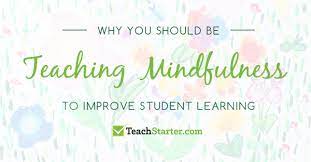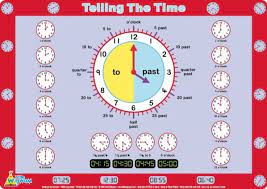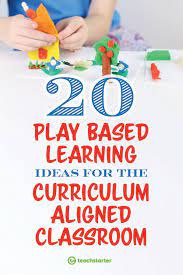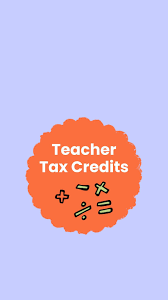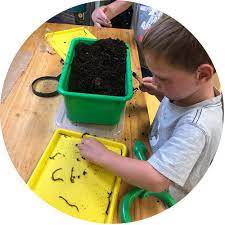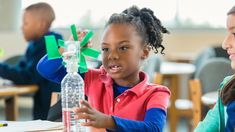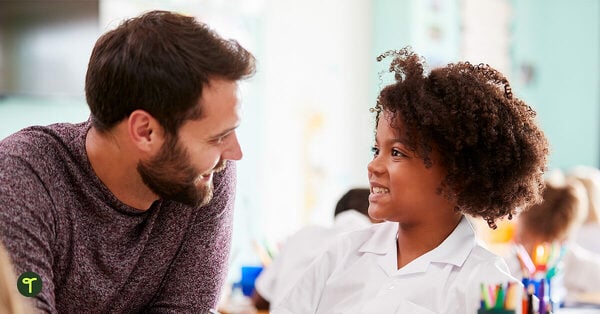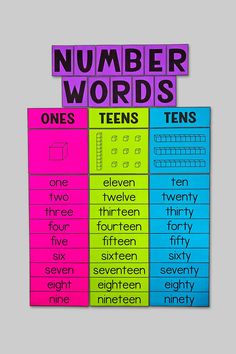In recent years, educators and researchers have become increasingly interested in the role of mindfulness in the academic environment. Mindfulness – a form of meditation that encourages individuals to focus their attention on the present moment, acknowledging and accepting thoughts and sensations without judgment – has shown promise as a tool for enhancing students’ learning experiences in schools across the United States.
But why mindfulness, and why now? The modern educational landscape is rife with distractions: social media, smartphones, and ever-mounting academic pressures vie for students’ attention. Amidst this cacophony, mindfulness offers a quiet space for students to breathe and refocus. Studies have suggested that when students regularly practice mindfulness, they may experience numerous benefits including improved attention, decreased stress levels, better emotional regulation, increased empathy and self-esteem, and even greater academic achievement.
Furthermore, mindfulness can be particularly beneficial in classroom settings. Teachers trained in mindfulness strategies can lead short sessions at the beginning of class or during transition periods. This doesn’t just benefit the students; teachers practicing mindfulness report lower levels of burnout and higher job satisfaction. It’s a positive feedback loop where decreased teacher stress can contribute to a more relaxed learning environment, further benefiting the students.
Yet teaching mindfulness is not without its challenges. Integrating mindfulness into a curriculum often requires additional training for teachers, a as well as buy-in from parents and school administrators. Moreover, it’s essential that mindfulness exercises be presented in an accessible way that resonates with students from diverse backgrounds.
Despite these challenges, promising practices are emerging throughout US schools. For example:
– Mindful Moments: Some schools start each day or class with a minute of mindfulness exercises to help center the students.
– Integrative Curriculum: In some cases, mindfulness is woven into lessons on subjects ranging from literature to social studies.
– After-School Programs: Mindfulness clubs or activities provide interested students an opportunity to delve deeper into the practice.
Research into how teaching mindfulness can enhance learning is still evolving. Preliminary findings suggest that its implementation can mitigate some of the adverse effects stress has on cognitive processes like attention and memory. As such evidence mounts and practices spread, we may see mindfulness become as fundamental to education as homework and high-stakes testing once were.
In conclusion, by fostering an environment where students can cultivate awareness and presence of mind, US schools are not just teaching math or science—they’re also equipping young people with essential skills to navigate an increasingly complex world with resilience and clarity. The pursuit is noble: create not just better learners but also more mindful individuals who contribute positively to society at large. Such efforts sow seeds for a future where education is not merely about filling minds but nourishing them too.
New Unit and Lesson Plans! Teaching Time to Year 3 and 4
In the ever-evolving landscape of education, the introduction of new unit and lesson plans specifically designed for teaching time to students in Year 3 and Year 4 is a significant milestone. Recognizing the foundational importance of conceptualizing and managing time, educators have developed a comprehensive curriculum aimed at enhancing students’ understanding of hours, minutes, and seconds along with more complex concepts like duration, chronology, and time management.
The newly introduced unit encapsulates a range of dynamic activities and methodical approaches tailored to suit children aged 7 to 9. The robust framework of this curriculum not only includes traditional teachings of reading analog and digital clocks but also integrates fun-filled games which cement the concept of time in a playful yet effective manner.
One key facet of this curriculum is its adaptability; it acknowledges that each student learns differently. Consequently, it incorporates various teaching aids such as interactive whiteboard sessions, printable worksheets, group discussions, and hands-on experiments – each designed to cater to different learning preferences.
To kick off the unit, lesson one begins with a fundamental introduction to the face of a clock. This includes identifying the hour, minute, and second hands and understanding their movements. As lessons progress, students delve deeper into more intricate elements such as calculating intervals of time.
Practical applications are an integral part of this unit. Teachers are guided to employ real-life scenarios like scheduling a day’s activities or creating timelines for historical events which help solidify these temporal concepts in young minds.
Assessment methods have been carefully considered in this new unit plan. Alongside traditional quizzes and timed exercises, there are reflective discussions designed to encourage students to articulate their understanding of time in daily life.
By the end of this unit, Year 3 and Year 4 students will be expected not just to read time with proficiency but to apply their newly acquired skills in planning their routines, estimating the duration of tasks, and developing good time management habits – competencies that will serve them well beyond their primary school years.
In conclusion, these new unit and lesson plans are poised to transform how young learners perceive and interact with time. Educators stand ready with these innovative resources to usher in an era where mastering time is not only educational but exciting for every student within their formative years.
Worksheets for Teachers
Worksheets are essential tools for educators, serving as a bridge between teaching and learning processes. Spanning various subjects and grade levels, worksheets provide a structured way for students to apply and practice the concepts they’ve learned in class.
The effectiveness of worksheets is closely linked to how well they align with the educational goals they aim to achieve. Good worksheets tap into different learning styles; including visual, auditory, and kinaesthetic methods of information processing. This diversity ensures that every student has the opportunity to understand and retain the subject matter regardless of their preferred learning style.
Worksheets serve multiple roles in the classroom:
1. Reinforcement: By providing exercises aligned with lessons taught, worksheets reinforce the materials covered in class ensuring that core concepts are not easily forgotten.
2. Assessment: Teachers can use worksheets as a tool for assessing student understanding and progress. Analyzing completed worksheets provides quick feedback on a student’s proficiency or areas needing improvement.
3. Practice: “Practice makes perfect,” as the saying goes. Worksheets offer students ample opportunity to practice new skills, which is critical for mastering them.
4. Differentiation: Customizable worksheets allow teachers to address the varying skill levels within a single classroom. Advanced learners can be challenged with more complex tasks, while those who struggle can benefit from additional practice with more basic questions.
5. Engagement: Fun activities or puzzles included in some worksheets can make learning more enjoyable. Engaging content increases motivation and can drastically improve a student’s relationship with the material.
For teachers, creating or selecting effective worksheets can be demanding but offers an opportunity for creativity and tailoring learning experiences to their students’ needs. Resources such as teacher supply stores, educational websites, and teaching forums provide a vast array of ready-made worksheets catering to various subjects like mathematics, language arts, science, social studies, and foreign languages. In addition, digital platforms offer interactive worksheet experiences that can provide instant feedback and foster independent learning.
In the modern educational landscape, incorporating technology enhances the traditional worksheet experience through digital workbooks and online platforms facilitating dynamic interactions withcontent that’s easily accessible from anywhere at any time. Whether digital or paper-based, ensuring accessibility for all students is paramount; hence designs should consider learners with special needs by adhering to principles of universal design for learning (UDL).
In conclusion, thoughtfully crafted worksheets serve not only as an extension of classroom instruction but also inspire independent study habits and lifelong learning skills—forming an indispensable part of effective teaching strategies aimed at cultivating knowledgeable and capable minds for the future.
20 Play-Based Learning Ideas for the Curriculum-Aligned Classroom
Incorporating play into the classroom is a powerful approach that promotes engagement and enhances learning. The following are 20 play-based learning ideas tailored to align with various curricular areas, ensuring educational objectives are met through playful experiences:
1. Mathematical Treasure Hunt: Set up a treasure hunt where students solve math problems to get clues leading them to the treasure.
2. Storytelling Puppetry: Using puppets, children can create and perform their versions of stories from the language arts curriculum.
3. Historical Role-Play: Students can assume the roles of historical figures and reenact important events, deepening their understanding of history.
4. Science Lab Mystery: Design a mock crime scene investigation where students must use scientific methods and knowledge to solve a mystery.
5. Musical Fractions: Use music and rhythm to teach fractions; different musical notes represent different fractions.
6. Art Gallery Walk: Students create artworks based on topics they’re studying and then host a gallery walk to discuss their pieces from an art critic perspective.
7. Weather Station Dramatization: Create a pretend weather station in class where kids can role-play meteorologists reporting on weather patterns tied to their science lessons.
8. Geometric Construction Zone: Kids use blocks or building materials to construct geometric shapes and structures, integrating geometry skills with engineering play.
9. Poetry Cafe: Host a café in class where students write and perform poetry covering themes from the curriculum while practicing public speaking.
10. Environmental Stewardship Garden: Plant a class garden where students learn about plants, ecology, and sustainability, aligning with science standards.
11. Fitness Fractions: Incorporate physical education by using exercises like jumping jacks or sprints to teach concepts like fractions or sequences.
12. Simulated Economics Market: Run a classroom market where students learn about supply and demand through buying and selling play items with fake currency.
13. Literary Character Costume Day: Have children dress as their favorite book character for a day, promoting comprehension and engagement with literature.
14. Biography Interviews: Students research and then “become” an important figure, getting interviewed by classmates about their lives.
15. Periodic Table Battleship: Teach chemical elements by adapting the classic game of Battleship into a learning experience about the periodic table.
16. Civic Duty Simulation: Run a mock election or debate on classroom rules or broader issues, emphasizing social studies curriculum on government and responsibility.
17. Fraction Pizza Party: Use pizza (real or play) divided into sections to teach fractions in an appetizing manner that stimulates mathematical thinking.
18. Explorer Expeditions: Turn the classroom into different biomes or historical sites that students explore as early explorers learning geography and social studies content.
19. Grammar Gardeners: For each gardening action (digging, planting, watering), students must perform a grammar task relevant to their current lessons (naming parts of speech, conjugating verbs).
20. Technology Coding Games: Introduce basic coding concepts using games and challenges that require logical thinking and problem-solving skills aligned with technology standards in education.
Teacher Tax Credit
Educating the next generation is a noble and essential service that comes with its own set of unique expenses. Fortunately, the Teacher Tax Credit is a provision designed to acknowledge and alleviate some of the financial burdens shouldered by educators.
For every academic year, teachers, instructors, counselors, principals, and aides in K-12 institutions can take advantage of this non-refundable tax credit. Eligibility requires working at least 900 hours per school year in a school that provides elementary or secondary education as determined under state law.
The tax credit allows qualified educators to deduct up to $250 of out-of-pocket expenses incurred for purchasing classroom supplies, including books, supplies, computer equipment (including software and services), other equipment, and supplementary materials used in the classroom. In cases where both spouses are eligible educators and file jointly, the maximum deduction doubles to $500.
The benefit of the Teacher Tax Credit is twofold: it directly reduces the taxable income of educators, thus lowering their tax liability; and it indirectly benefits students through enhanced learning resources made possible by their teacher’s investments. While the credit doesn’t cover every expense educators face, it certainly acts as an acknowledgment of their dedication to fostering a rich learning environment.
Indeed, even though this tax credit is only a small gesture compared to the full spectrum of an educator’s investment in our children’s future, it aligns with broader efforts to support teachers and recognize the pivotal role they play in shaping society.
Composting Classroom Including Curriculum Links
Composting is a natural process that turns organic waste into a nutrient-rich substance known as compost. It not only reduces the amount of waste that ends up in landfills but also improves soil quality, which is beneficial for plant growth. Incorporating composting practices into school curricula is not merely about teaching sustainable practices; it also offers a wealth of cross-curricular links to education, ranging from science and environmental studies to math and social responsibility.
The process of composting provides an excellent opportunity for hands-on learning. Students can observe firsthand the decomposition process while learning about various scientific principles involved, such as the nitrogen cycle, the role of microorganisms in the ecosystem, and the physical breakdown of organic materials. Science classes can carry out experiments to observe how different factors like temperature, aeration, and moisture levels affect the speed of decomposition.
In environmental studies, composting sheds light on waste management systems and introduces students to sustainable practices that can be adopted to mitigate environmental issues. Discussions can extend to broader topics like the impact of landfills on ecosystems and how personal and community actions contribute to an environmentally friendly lifestyle.
Mathematics can be integrated into composting education through data collection and analysis. Students can measure and record changes in the volume of compost over time, calculate reduction rates in waste production, or analyze patterns in waste segregation practices. They can learn about ratios and proportions by balancing green (nitrogen-rich) and brown (carbon-rich) materials necessary for efficient composting.
Furthermore, composting provides touchpoints for lessons in social Responsibility and civic engagement. Students understand their role in the local community’s waste management strategy and learn how individual actions contribute to collective sustainability efforts. This notion can foster a sense of stewardship towards their environment.
The curriculum links do not end there; language arts classes might involve students writing persuasive essays on the benefits of composting or reports on their findings from a compost study. For younger students, stories or creative writing assignments about the life cycle of an apple core could provide engaging ways to integrate language skills with environmental education.
Composting also opens up avenues for integrating technology into the classroom through apps that track decomposition progress or digital tools used to design informative material promoting community-wide compost programs.
By weaving elements of sustainability such as composting into various facets of K-12 education, teachers prepare students not only academically but also as mindful citizens who are aware of their impact on Earth’s finite resources. Engaging students in composting activities helps develop critical thinking skills about conservation and resource management while fostering an ethic that values preservation over wastefulness. With these comprehensive curriculum links between composting and various subjects, educators create a multidimensional learning experience that extends beyond traditional classroom boundaries.
Visible Learning In The Classroom
In recent years, the concept of Visible Learning has transformed the landscape of education, offering a revolutionary approach to teaching and learning rooted in robust research. Pioneered by John Hattie, Visible Learning synthesizes insights from millions of students and represents the largest ever collection of evidence-based research into what actually works in schools to improve learning.
At its core, Visible Learning is about recognizing and understanding the impact that teachers have on student learning. The approach hinges on the visibility of teaching and learning processes; that is, making student learning visible to teachers so they can see whether their teaching is having the desired effect and making teaching visible to students so they know what to learn and how their efforts are contributing to their success. It’s about moving away from teaching as mere content delivery and embracing a culture where feedback, strategy, and student progress are central.
The mantra of Visible Learning is simple yet profound: When teachers see learning through the eyes of their students, and students see themselves as their own teachers, profound learning gains can occur. It encourages instructors to become evaluators of their teaching effect, to empower students to take control of their educational journey, and to foster an environment where feedback is not just accepted but sought after.
Visible Learning proposes that almost everything in education works to some degree, but it’s the magnitude of impact that truly makes a difference. Hattie identified key strategies with the highest effect sizes: feedback, reciprocal teaching, teacher clarity, and formative evaluation among them. Strikingly, he notes that a year’s worth of teaching should equate to a year’s worth of learning for every student; if this isn’t happening, we need to adjust our methods.
Implementing Visible Learning in classrooms necessitates a shift towards evidence-based practices. Educators must be well-versed in these practices and willing to adapt based on what the evidence suggests works best. It also requires transparent communication between teachers and students about expectations regarding achievement and progress.
One major implication of Visible Learning is that it holds teachers accountable but also empowers them with data to inform instructional design. Teachers are called upon to interpret effect sizes relating to different interventions and strategies—which ones provide ‘bang for buck’—and apply these insights contextually within their classrooms.
Another important aspect is student self-assessment; learners should regularly assess their understanding and skill development which leads them towards becoming independent learners who can set goals, monitor progress, and regulate their learning strategies accordingly.
For educators worldwide striving for excellence in education reform, Visible Learning delivers a clear message: effective teaching is visible teaching. It reminds us that despite various curricular demands or administrative pressures, our primary focus must always be on creating optimum environments for student achievements. Through embracing principles from Visible Learning researches and allowing it to guide curriculum design as well as classroom practice, we can take pragmatic steps toward enhancing the educational outcomes for all learners.
Meet Our Designer – Pru Earl
When it comes to innovative design and a fresh artistic perspective, Pru Earl stands out in the crowd. With an eye for detail and a keen sense of aesthetic balance, Pru has made a significant impact in the world of design.
Pru’s journey into the realm of design began at a young age, influenced by the vibrant culture and eclectic architecture of her hometown. Her early fascination with textures, colors, and space translated into a passionate pursuit of art and design education. Over time, Pru honed her skills and developed a distinctive style that emphasizes functionality without compromising on beauty.
Her work speaks volumes about her ability to harmonize form with function. Pru believes that good design solves problems and exceeds expectations. She approaches every project with this philosophy in mind, ensuring that she delivers solutions that are not only visually appealing but also practical and user-friendly.
In her illustrious career, Pru has worked with renowned design firms, where she contributed to some of the most forward-thinking projects. Her portfolio showcases a diversity of work ranging from elegant residential interiors to bold commercial spaces.
What sets Pru apart is her dedication to sustainability and her push towards eco-friendly practices in design. She strives to create designs that not only look good but also have a positive impact on the environment. This commitment to ecology is woven through each aspect of her creations, from materials selection to waste reduction strategies during production.
Beyond her professional achievements, Pru is an avid mentor, inspiring up-and-coming designers through workshops and lectures. She emphasizes the importance of continuous learning and encourages emerging talents to push boundaries and challenge conventional norms.
Meet Our Designer – Pru Earl is an invitation to explore the world through the eyes of a creator who sees endless possibilities. Her passion, combined with her expertise, makes every space she touches not just aesthetically pleasing but also deeply resonant with those who experience it.
Pru’s influence in the industry is undeniable as she continues to innovate and inspire. Her commitment to excellence reflects in every line drawn, every space planned, and every client delighted. As we celebrate her contributions, we eagerly anticipate what this talented designer will conjure up next in the world of design.
How to Set Up Guided Reading Groups in the Classroom + Activities
Setting up guided reading groups and integrating reading activities in the classroom is a powerful way to enhance students’ literacy skills. The objective of guided reading is to provide differentiated teaching that supports students in developing reading proficiency. Here’s how you can set up these groups and some activities that can be implemented.
1. Assess Student Reading Levels
Begin by assessing each student’s reading level through individual reading inventories or standardized tests. This helps place students in appropriate guided reading groups.
2. Create Small, Flexible Groups
Divide students into small groups (4-6 students) based on their reading levels. These groups should be flexible, allowing for movement between them as students progress or need extra support.
3. Select Appropriate Materials
Choose books or texts that are just right for the skill levels of each group. The text should offer a bit of a challenge, but not be so difficult that it becomes frustrating.
4. Schedule Regular Sessions
Dedicate time for guided reading sessions in your weekly schedule. Each group should have regular, focused reading time with the teacher.
5. Plan Targeted Lessons
Design brief lessons that focus on specific skills such as decoding, fluency, comprehension, or vocabulary.
6. Rotate Groups Thoughtfully
While one group works with the teacher, other students can engage in meaningful literacy activities independently or with peers.
7. Monitor Progress
Keep records of student progress and use this data to inform your instruction and to make adjustments to groupings as needed.
8. Train Students on Group Expectations
Teach students what to do during their guided reading time, including how to behave when not working directly with the teacher.
Activities for Guided Reading Groups
Before Reading: Picture Walks
Have students preview the illustrations in a book to make predictions about the story and discuss unfamiliar vocabulary.
During Reading: Whisper Reading
Allow each student to quietly read aloud simultaneously to practice fluency while you listen in turn and provide immediate feedback.
After Reading: Retelling Activities
Encourage students to retell the story in their own words, focusing on the sequence of events, character actions, and settings.
Word Work Games
Incorporate games that focus on phonics, such as matching rhyming words, segmenting sounds in words, or sorting pictures by initial sounds.
Comprehension Graphic Organizers
Use graphic organizers like story maps or Venn diagrams to help visualize and compare story elements or themes.
By following these steps and incorporating engaging activities, educators will establish an effective guided reading framework which will support their students in becoming proficient readers.
5 Ways to Use Letter Tiles in the Classroom
Letter tiles are a versatile and engaging educational tool that can be used to support literacy learning in the classroom. Here are five creative ways to utilize letter tiles to enhance your students’ reading and writing skills:
1.Spelling Practice: Use letter tiles to help students practice spelling words. Have them select tiles to spell words from a list, or challenge them to create their own list of words by making as many words as they can from a given set of tiles. This hands-on approach is particularly effective for tactile learners.
2.Building Vocabulary: Increase students’ vocabulary by using letter tiles for a “Word of the Day” activity. Present a new word each day and have students use the tiles to spell it out, discuss its meaning, and construct sentences using the word.
3.Phonics Games: Create fun phonics games with letter tiles that help students learn sounds and blends. For example, have students choose a vowel tile and pair it with different consonants or blends to form real or nonsense words, which helps reinforce their understanding of phonetic principles.
4.Sentence Construction: Encourage students to build sentences using letter tiles rather than just individual words. This activity will aid in developing grammar and syntax skills as they consider subject-verb agreement, punctuation, and proper sentence structure while physically manipulating the tiles.
5.Literacy Centers: Set up literacy centers where small groups of students work on various activities involving letter tiles. One station could focus on creating compound words, another on sorting words by syllable count, and another on finding rhyming words by changing initial consonants.
By incorporating these activities into your classroom routine, you not only make learning fun but also cater to different learning styles – from visual learners who benefit from seeing the letters in physical form, to kinesthetic learners who grasp concepts through touch and movement. Letter tiles are an excellent way to add variety and engagement to your literacy curriculum!
